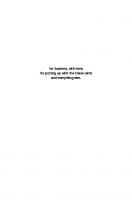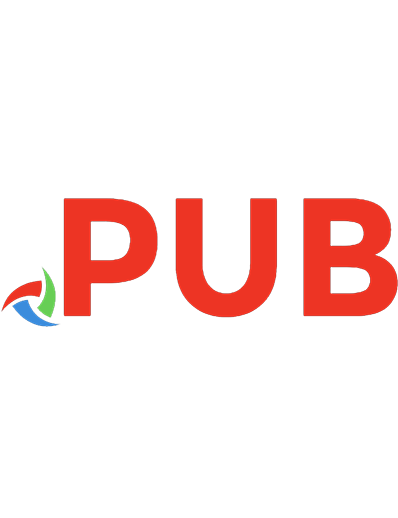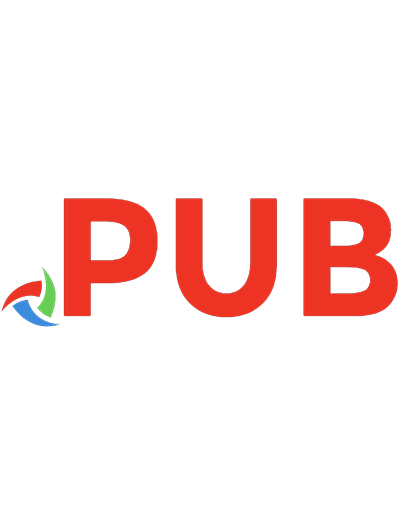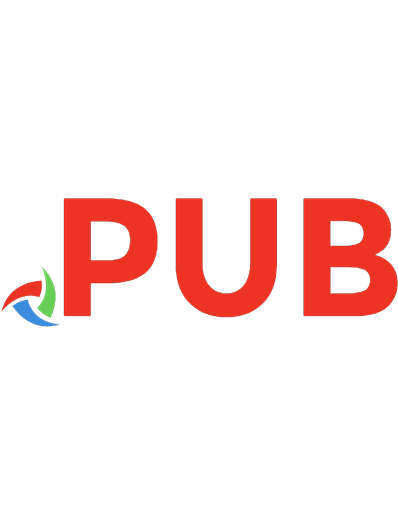Implications of Parent-Child Boundary Dissolution for Developmental Psychopathology: “Who Is the Parent and Who Is the Child?” 9780789030900, 078903090X, 9780789030917, 0789030918, 2005016888
482 128 5MB
English Pages [320] Year 2005
Polecaj historie
Table of contents :
Cover
Half Title
Title Page
Copyright Page
Table of Contents
About the Contributors
Introduction: Contributions of the Investigation of Boundary Dissolution to the Understanding of Developmental Psychopathology and Family Process
Conceptual and Methological Issues
Revisiting the Construct of Boundary Dissolution: A Multidimensional Perspective
Conceptual and Clinical Dilemmas in Defining and Assessing Role Reversal in Young Child-Caregiver Relationships
Boundary Dissolution in The Family System
The Developmental and Adaptational Implications of Generational Boundary Dissolution: Findings from a Prospective, Longitudinal Study
Antecedents of Boundary Disturbances in Families with Young Children: Intergenerational Transmission and Parent-Infant Caregiving Patterns
Family Processes and Children's Representations of Parentification
Interparental Conflict as Intrusive Family Process
Boundary Dissolution in High Risk Families
Redefining the Parent-Child Relationship Following Divorce: Examining the Risk for Boundary Dissolution
Is It Alienating Parenting, Role Reversal or Child Abuse? A Study of Children's Rejection of a Parent in Child Custody Disputes
Cultural Perspectives on Boundary Dissolution
Role of Filial Responsibility in the Post-War Adjustment of Bosnian Young Adolescents
Psychological Control, Maternal Emotion and Cognition, and Child Outcomes in Individualist and Collectivist Groups
Vulnerable Adults, Resourceful Children: Generational Boundary Dissolution as a Theme in Twentieth Century American Novels
Index
Citation preview
Patricia K. Kerig, PhD
Implications of Parent-Child Boundary Dissolution for Developmental Psychopathology: “Who Is the Parent and Who Is the Child?” Implicationso[Parent-ChiidBoundaryDissolution[orDevelopmentalPsychopathology;"Who Is the Parentand Who Is the Child?" hasbeenco-publishedsimultaneouslyasJournal o[EmotionalAbuse,Volume 5, Numbers213 and4 2005. Prepubllcallon
REVIEWS, COMMENTARIES,
EVALUA110NS . ..
'~INlORMA'DVE,.AND '~INlORMA'DVE,.AND
V
EXCI11NG.... A groupof stellac conttibulOlSfrom academic settingsand privatepractice focus alIenIion on the negalive impact of family boundary disturbances in children'sdevelopmentand adaptation. These boundarydisturban=, m winch typ;cal parenti child roles become blurred01' revetSed,are desaibedfrom differ'~INlORMA'DVE,.AND entperspecdves. Variouschaprers present enlightenlng discussions or indMduo\ _ , "'" ruhurnI
disturbances ond hIgh_ """.
COOIexIS of boundaly
Iow_ Iow_ In
lies. This is oneof the few bookson 'parent-child' rdationships which includesfathers as well as mothers, and that takes seriously what happensbetweenparentsand their children. It does a great Job of integrating theoretical approaches(attachment, psychodynamic, family '"""",, '~INlORMA'DVE,.AND _ P'}'Chopathology)andexploringthe implicationsfor practice."
"'"
Pbillp A. Cowan, PhD EmeritusProfessor ofhycbology UnWemIy ofGaIifomia
More Pre-publication
REVIEWS,COMMENTARIES,EVALUATIONS. ..
"IMPRESSNE. . . . OF GREAT VALUE to anyreseard1er or c1inidan trying to better undecitandand treat the developmentalderailmentsassociated with boundalydissoll.l1:i










